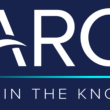It’s less than a decade since the family-owned Haymarket Media Group sold-off more than £170mn of investment property and publishing business as the self-confident company put a brave face on what was really a fight for survival. Onetime debt levels of £150mn had almost matched revenue and dwarfed profit as the web shredded the magazine industry. You could sense the relief in 2017 as Haymarket announced it was debt-free. Its been piling up cash ever since and growing faster than most.
Its £166mn revenue for the 12 months ended June 2022 was 12% up. The yet-to-be-reported financials for 2022-23 are expected to show an 8% increase. More significantly, the £183mn revenue (and £18mn EBITDA) will be back to the 2014 level – when the company still had borrowings of £90mn.
Not only does Haymarket now have net cash of some £50mn but its once sprawling portfolio across more than 20 consumer and B2B sectors is, well, more manageable and geared to digital growth.
But there’s more.
The UK-based company – made famous by the magazines like Campaign, What Car? and Autosport – operates in seven countries. But more than 50% of its revenue and some two-thirds of profit comes from its fast-growing medical information group in the United States, which employs 30% of all Haymarket employees. The UK, on which the company once depended, now generates just 40% of the revenue (down from 80% just a decade earlier).
It’s a striking transformation – during seemingly unpromising times – for the former magazine business which, 15 years ago, had peaked at £244mn revenue and 2,200 employees:
| £mn Haymarket Y/e June 30 | 2023 | 2022 | 2021 | 2020 | 2019 |
| Revenue | 183 | 166 | 148 | 143 | 162 |
| EBITDA | 18 | 17 | 17 | 8 | 9 |
| Margin | 10% | 10% | 11% | 6% | 6% |
| People | 1,360 | 1,271 | 1,223 | 1,288 | 1,395 |
| Rev % | |||||
| UK | 40% | 42% | 40% | 45% | 46% |
| US | 52% | 49% | 51% | 45% | 42% |
The company, which is budgeting at least £200mn revenue for the current 2023-24 year (+9%), is 66% digital, 21% events and 13% print. Total US revenue (some 87% of which is medical information, the rest being PR Week and Campaign US) is expected to increase by 20% in 2023-24 to £106mn – a 40% increase in six years.
A bumpy startup
The dramatic swing towards the US and medical information is just the latest transformation in the 66-year history of what is now the Haymarket Media Group. Its roots were in a directory of job opportunities for graduates, launched in 1957 by Michael (Lord) Heseltine, the former UK Deputy Prime Minister. It became one of the UK’s most consistently successful magazine publishers during decades when many of its competitors regularly swapped fortunes and ownership.
But it’s not always been easy.
After its initial, dull but profitable directory publishing, Heseltine abandoned his accounting studies and published Management Today which sought to combine serious business writing with the look and feel of a luxury consumer magazine.
It was full of flair, good writing and innovative design: a taste of what was to come from the fledgling company. Over the next 10 years, Haymarket was fizzing with magazine launches and acquisitions: Campaign, Practical Caravan, GP, Autosport, Classic & Sports Car, Accountancy Age, What Car?, Computing, Horticulture Week, and What HiFi?
But having been elected a UK Member of Parliament in 1966, Heseltine became a government minister in 1970 at the start of a spectacular political career. He duly put his Haymarket shares into a family trust and handed over Haymarket’s management for most of the succeeding 27 years to Lindsay Masters as chair and Simon Tindall, as managing director.
Haymarket people were ultra-competitive, creative and hungry for success. They were a bumpy mix of posh Brits and young tigers who recruited the best designers, journalists and sales people. Their use of telesales was almost revolutionary in UK magazines at the time. Advertising space selling had traditionally been all about making face-to-face calls in company-paid cars. But they had been watching what were regarded as the laid-back, over-paid sales teams at Reed/ IPC where a series of mergers had created a huge UK conglomerate of magazines, books and directories. It was a perfect, sometimes sleepy enemy for the dynamic newcomer.
But absentee owner Heseltine could never have imagined just how successful the company would become in his absence.
Media profiles of the rising political star told of a self-made millionaire who had built one of the country’s most successful magazine groups before going into parliament. But, although he had set the company up for its future success, the stories were somewhat ahead of the reality. A Heseltine biographer had later described his “totally chaotic business” coming close to bankruptcy in 1962 when borrowings reached the then extraordinary £250k, as a result of losses both from magazines and residential property. Haymarket was financially fragile for several years. But the energetic founder kept his nerve and the company made its first real profit (£136k) in 1969, just before he joined the government.
But it so nearly didn’t happen.
Haymarket’s publishing breakthrough came with the transformation of World’s Press News, described by Heseltine as “a classically awful trade magazine”, which had come from BPC. Its relaunch in 1968 as Campaign was sensational. It focused on advertising and media with what was then a radical design: news on the front page like a newspaper, but printed on glossy paper with magazine-like big pictures.
The large page-size was inspired by Advertising Age, in the US, and the overall style echoed the UK’s pace-setting Sunday Times Business News. The iconic design (much imitated by other publishers over the years) had clean lines and strong black-and-white photography. Campaign became one of the first business-to-business magazines to eschew PR mug-shots and employed a photographer to take all the news pictures, most often of people on fire escapes looking wind-blown and worried – but real. The magazine was also a pioneer in the awards ceremonies that are now a staple profit-earner of B2B media. The Campaign Press (now Media) Awards, launched in 1973, were imitated by hundreds of awards ceremonies promoted by Haymarket and publishers everywhere. In 1969, Heseltine had come up with the idea of Accountancy Age, a weekly newspaper which recouped all its launch costs in four weeks.
By 1973, the fast-growing publisher was riding high on its way to an expected IPO. Its profits had been doubling each year and had been expected to reach £1mn. But the Middle East oil crisis in the early 1970s caused a stock market collapse and, as Heseltine said later, “we abandoned the flotation…and all of us who were shareholders have been profoundly grateful ever since.”
Golden days
Haymarket was always opportunistic.
In 1981, it sold the classified-rich weeklies Accountancy Age and Computing to the Dutch publisher VNU for £17mn. The papers accounted for about one-third of the whole company and most of the proceeds were used to pay-off borrowings. To anybody who believed the stories about Haymarket’s huge financial success, it was a surprising divestment. But – finally – the founder was in great financial shape. And so was his company.
It was a time when weekly B2B magazines in the UK were starting to generate more than 50% of their revenues (and all of their profit) from the booming market for national recruitment advertising.
Consumer magazines were also hot.
The monthly magazine What Car? was launched in 1973 to use group road tests as backbone content, aimed not so much at enthusiasts as people who wanted to buy cars. Arguably, it was the first of its kind, and became the most striking evidence that Haymarket could become a formidable digital media group. It is, incidentally, more than 10 years since the What Car? publisher stunned peers at a London conference by disclosing that not only was the What Car? web site profitable (a real novelty back then) but that it made more profit than the (still pretty strong) print magazine. It had become the company’s most profitable brand.
Haymarket came to dominate innovation in UK motoring magazines in the same way as the storied EMAP did in music. In both, the big losers were the established magazines from IPC-Reed. In 1988, the two relative newcomers formed the Frontline magazine distribution partnership whose improved retail terms immediately increased Haymarket’s newsstand revenues by more than 10%.
Medical publishing had been a core Haymarket business since it acquired MIMS (“Monthly Index of Medical Specialities”) and GP magazine in 1964. It took the company into the US, where it launched a version – the MPR (“Monthly Prescribing Reference”) – in 1985.
Going global
But the next major change came in 1997 when Michael Heseltine returned from his triumphant political career (he so nearly succeeded Margaret Thatcher as UK Prime Minister) to become chair of Haymarket. Having been the UK’s ministerial boss of world trade, he was now on a mission to internationalise his own company. Within a few years, it had assembled a network of some 100 international editions of its magazines. In 1999, it became one of the first magazine publishers to enter the Indian market ahead of the 2004 repeal of laws which had previously prohibited foreign media ownership.
By then, some 14% of Haymarket’s revenue was coming from outside the UK. And, in 2011, everybody could see what had motivated Heseltine’s global ambitions: Recession and the digital defection of classified ad revenues saw the company’s UK revenues fall to £139.2mn – 25% down in six years.
In 2014, total revenue was was £187mn – 18% down on 2005, but international revenues were £67mn (36% of the total), with almost two-thirds coming from the US. The still dominant UK made pre-tax profits of £10.7mn (a 9% margin), the US made £2.8mn (7%) and the rest of the world (Hong Kong, Singapore, India and Germany) made an aggregate loss of £2.4mn. But things got trickier.
UK specialist publishers like Haymarket, Dennis and Future had some great years collecting high-margin revenues from global networks of licensees paying royalties to re-use high-quality content in their own booming magazine markets. In some ways, the licensing of specialist magazines as a rich seam of high-margin profit was obscured by the better-known Cosmopolitan and Vogue which had pioneered international editions in previous decades.
But the booming internet started to explode the neat separation of national editions, even though some publishing markets (like India) were still growing. Haymarket’s 2014 pre-tax profits of £11.1mn seemed like a bounce-back from the losses of £7.6mn in the previous 18 months and prompted eloquent words from Heseltine: “These figures are a testament to the continued operating strength of the group, the benefits of our recapitalisation in recent years and a prudent approach to managing our property and asset portfolio. As a result, Haymarket is well positioned to harness growth opportunities amid an improving economic outlook in its core UK and US markets.”
But, like media companies everywhere, the figures could not disguise the fact that digital revenues were growing too slowly to compensate for the print decline. Over the previous decade, the company had lost large volumes of high-margin classified print revenues to digital specialists. And it was getting worse.
The 2014 financials were flattered by profits of £17mn from the £27m sale of the company’s former West London offices. But for that windfall, it would have been another loss-making year. It was a very long way from 2007 when profits had peaked at £44mn.
One almost hidden problem became the series of transactions with which Michael Heseltine and his family bought back the 49% of Haymarket shares held by Lindsay Masters, Simon Tindall and long-time Finance Director David Fraser – for a total price of more than £100mn.
Those buy-backs – coupled with international investments, weak trading, successive redundancy and relocation plans – weighed down the company with debt for almost 10 years.
You can imagine how tough Haymarket executives had found it to wave goodbye to, say, the motorsport magazines that had almost defined the company for decades. Perhaps even more galling may have been the divestment of the brilliant, all-digital PistonHeads which had been acquired for about £1mn (less than what quickly became the annual profits). But an offer of 13x made that sale too a no-brainer. Many of the company’s best known magazines and B2B brands including Stuff, Print Week, Gramophone, What HiFi, and Autosport have gone. But so has the debt.
Bouncing back
It is difficult not to agree with Michael Heseltine’s long-ago assessment of Haymarket as “an admired and innovative publishing business that helped to change the face of British publishing.” In the toughest of times for companies which once depended on printed magazines, it has also provided a case study of how – under pressure – you can sharpen the strategic focus, sell-off brands that were once core business, and get back to investing in quality content. The endlessly bullish Haymarket moved from being expansive at the start of the 21st century to a needs-must, sell-off and – now – it’s back to its old ways of looking for creative new ways to beat competitors in new media and new markets.
Haymarket is growing again from a portfolio comprising:
- Medical information and events, in the US and UK
- Automotive consumer brands, principally in the UK and India
- B2B information and events in marketing communications, architecture, business management, energy, finance and horticulture in the UK, Germany and South East Asia
- Content marketing and sponsored media
But the big story is the Haymarket Health Network.
The irony of the US medical portfolio is that it so nearly didn’t happen. More than a decade after the launch of the data-rich MPR, a Haymarket board proposal to sell-out of the US medical market was blocked almost at the last-minute by Michael Heseltine as he returned to re-take control of the business in 1997-98. More than 10 years later, the rationalising company sold off Compliance Week and Secure Computing US in order to concentrate on medical and marcomms – and raise cash.
The US medical portfolio now comprises: Medical Communications (featuring 15 brands including Oncology Adviser, Dermatology Advisor and Rare Disease Advisor, and the recently-acquired American Journal of Endocannabinoid Medicine); and Medical Education. ‘Comms’ is expected to achieve $60mn in 2023-24 (+30% in three years) and ‘Education’ $44.4mn (+10%).
Haymarket has become one of the three leading Medical Education players (Web MD’s Medscape is the leader) in a booming US market where doctors are required to re-apply for their license (and account for their CPD) every year. That’s one reason why US Medical Education is predicted to sustain its 6% annual revenue growth for the next decade. In 2019, Haymarket paid £9mn to acquire the Florida-based National Association for Continuing Education (NACE) which provides live, virtual, and online education for doctors. It boosted the company’s total database to 1.8mn healthcare professionals. But there’s clearly much more to come.
It is notable that 40% of Haymarket’s £100mn US revenue (x2 in six years) comes from brands that did not exist five years ago:
| Haymarket US £mn | 2024* | 2023 | 2022 | 2021 | 2020 | 2019 | 2018 |
| Revenue | 106 | 91 | 80 | 75 | 64 | 68 | 57 |
| Growth | 16% | 16% | 8% | 17% | 6% | 19% | |
| Pre-tax profit | 13 | 12 | 13 |
Although Haymarket’s US operations (based variously in New York, Florida and Chicago) are predominantly medical, both the 25-year-old PR Week and Campaign US are also now profitable.
The almost secret – and stunning – success of Haymarket in the US (a graveyard for many another ambitious UK company) underlines the scale of its latest transformation after some punishing years when it may have seemed unlikely to survive. In a few short years, it has changed from a UK-based company equally committed to B2B and specialist consumer brands (much more print than digital) into a mostly-digital, global B2B media company.
It has helped that – for all the upheaval and corporate fire-fighting – Haymarket has been steady at the top. It’s still owned by the family of chair Rupert Heseltine whose father is the UK’s 90-year-old elder statesman of politics and publishing. Kevin Costello has been CEO for more than a decade, leading the reinvention and rejuvenation of the company for which he has worked almost his entire 30-year career. A real case study.




